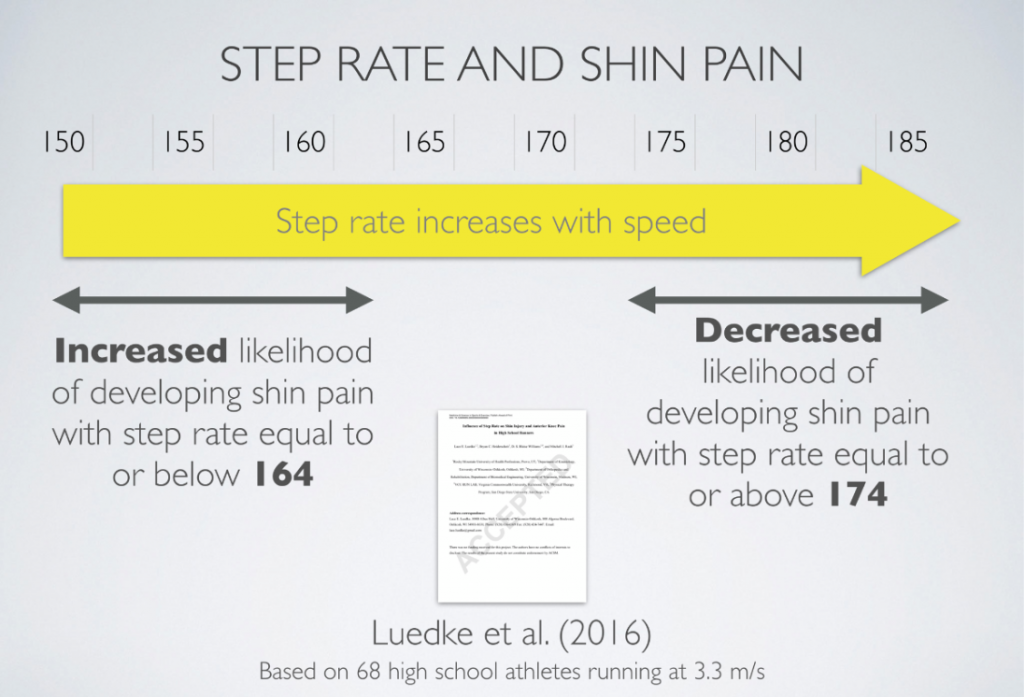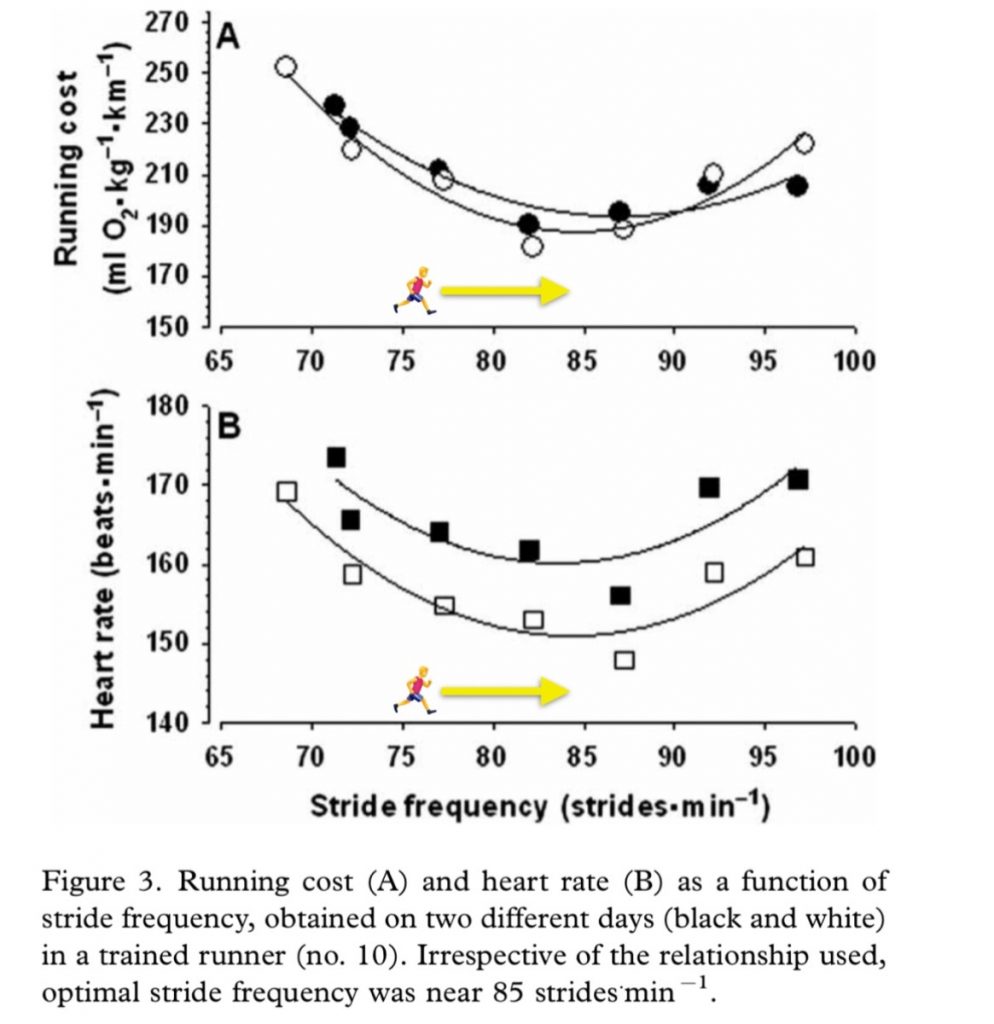I read a paper this week that really got me thinking. When we analyse a runner’s gait we usually do so with a view to injury. We’re asking ourselves if the individual’s gait may place more stress on sensitive tissue and whether we can change it. I also often wonder though what impact such changes may have on performance. This new study went some way to answering that question and exploring the interplay between gait, loading and efficiency…
Running Economy is a measurement of efficiency in runners. Runners with good economy use less oxygen than runners with poor economy at the same steady state speed (Barnes and Kilding 2015 – a great open access paper if you’d like to find out more).
There are some intriguing findings here that link to research on running injury as well as other studies on economy. For example Quinn et al. (2019) report that step rate increased by approximately 7.5% which is also how much Willy et al. (2015) aimed to increase step rate by in their study which saw reductions in impact force, hip adduction and knee load. A recent study (Pizzuto et al. 2019) found that knee flexion/ extension and hip adduction during stance were associated with running economy, with hip adduction explaining as much as 43% of the variance in economy. In a nutshell increased knee flexion or hip adduction during stance appear likely to have a negative effect on economy. They’re also thought to increase load on several tissues, especially the patellofemoral joint (Lenhart et al. 2014, Neal et al. 2016).

Increasing step rate by 10% has been found to reduce peak knee flexion and hip adduction (Schubert et al. 2014) and reduce patellofemoral load and peak muscle forces for the calf, quads and glutes (Lenhart et al. 2014). An increase in step rate has also been reported to reduce peak achilles load, (Lyght et al. 2016) tibial load (Edwards et al. 2009) and plantar fascial load (Wellenkotter et al. 2014). Luedke et al. (2016) found those with a low step rate (164 or less) were more likely to develop shin pain that those with a higher step rate (174 or above).
It would appear that making small increases in step rate of approximately 7.5% to 10% may have positive effects for both economy and tissue loading. There is evidence that this may reduce pain (Dos Santos et al. 2019) but it’s fair to say studies utilising step rate increases in those with pain/ pathology remain limited. In addition decreasing hip adduction in female runners with excessive hip adduction during gait has been found to improve symptoms in patellofemoral pain (Noehren et al. 2011, Willy et al. 2012). Based on Pizzuto et al’s results this may help economy too.
As ever we must be aware of the limitations of the research, for example in Quinn et al’s study are results influenced by the training effect of sustaining a significant increase in step rate for 15 minutes? An 11% decrease in oxygen consumption does seem a large change but then smiling while you run has been found to improve economy by nearly 3% (Brick et al. 2018)! It’s important to recognise that increasing cadence is far from a cure all and should be based on an individual’s need and goals. Step rate is influenced by speed and height and tends to be higher in more experienced athletes (Luedke et al. 2018). There’s no single approach to it (such as aiming for a cadence of 180) that will suit everyone.
The participants in Quinn et al’s study all had low step rates, defined as less than 176 steps per minute (spm). Those with a lower step rate are more likely to benefit from an increase than those already at high preferred step rates. This ties in with de Ruiter et al. (2014) whose graphic we’ve adapted below. For those with low step rates (like our running figure in the image) increasing may take them closer to their optimal, however both heart rate and running cost appear to increase above this.

If step rate is already high or we increase it too much it can have a negative effect on running economy and lead to a high number of loading cycles. This is the trade off, increasing steps per minute may mean lower peak loads but it does mean more loading cycles and this needs to be considered.In clinic we often see a ‘shuffling gait’ as a result of an excessive increase in step rate as demonstrated by the runner below. Note how toe off of the left leg is occurring almost immediately before foot strike of the right, meaning minimal flight time and reduced stride length.
Thinking about your running technique may be detrimental for running economy (Schücker and Parrington 2018) and so any changes we make need to outweigh the effects of increased effort to make these changes, especially in the short term. Innovative new research from Whittier et al. (2019) suggests that while gait changes may increase cognitive demand in the short term this reduces over time with practice. It may be that acutely economy is worse as a result of the effort of making a change but this improves as we learn the technique, however more evidence is required to demonstrate this and to see what affect gait changes have on performance.
